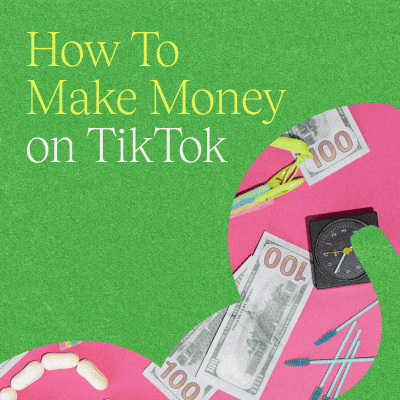If you’re a creator, you’ve probably heard of over-the-top (OTT) media services at least once. These on-demand video streaming platforms give users access to their favorite content whenever and wherever they want it. On top of that, they provide creators an easy way to monetize their content.
From YouTube to Twitch, over-the-top media services are all the rage right now among both consumers and creators. And with the revenue of OTT services averaging $62.65 per user in 2022, there’s an even stronger incentive for creators to start using these video monetization platforms.
Whether you’ve created video content before or you’re just getting started, there is a lot of room to grow as a creator in the video monetization space. With the help of the right platform, you can take your growth even further.
So, you might be wondering, where do I start? Or, what are the best video monetization platforms to use in order to maximize my revenue?
If you’re a creator looking to earn money with videos, read on for everything you need to know about video monetization in 2023, including a deep dive into the best platforms on the market right now.
What is video monetization?
In short, video monetization is a way to generate revenue from video content. In recent years, creators, life coaches, entrepreneurs, and marketers across the globe have started transforming video content into a new stream of income.
Video content comes in a lot of forms, including animated clips, short films, documentaries, how-to tutorials, unboxing videos, and stock videos — all of which can be monetized.
Before the internet, the old-school approach to video monetization was simple: simply record a short clip and upload it to a DVD, CD, or USB for distribution. A traditional payment transaction would take place, either by cash or credit, and profit would be banked.
Today, it’s quite the same, except everything happens online. Upload a video to your own website or a third-party video monetization platform, and you can receive electronic payments and cash out. Once a video is uploaded to your chosen video hosting platform, it becomes a low-effort way to generate passive income.
What are different types of video monetization?
Advertising-based video on demand (AVOD)
This approach relies on the placement of video ads before and after your videos in order to generate revenue. An advertising company or third-party advertising network will pay you to post their ads on your videos. Some companies might pay for an ad as a set fee per period (for example, per month). However, most often, ad revenue is paid based on the number of views the ad gets.
This is measured in cost per thousand views (CPM). In this case, some of the onus is on the creator to ensure their content (and, in turn, the video ads) get the most views possible to maximize their ad income. It’s likely you have seen these kinds of video ads on platforms like Youtube or Paramount+.
Subscription-based video on demand (SVOD)
If you subscribe to a video streaming platform like Netflix, Amazon Prime, or Disney+, you’ve already encountered subscription-based video on demand (SVOD). This approach charges a set fee, usually as a monthly charge, for unlimited access to the streaming service’s content.
Transactional video on demand (TVOD)
Transactional video on demand (TVOD) is also commonly known as pay-per-view (PPV). With this kind of video streaming platform, viewers pay either to watch a video or to rent it for a limited period of time. If you purchase an online course, for example, you are buying into TVOD.
TVOD can also be combined with SVOD in a hybrid approach. This model charges users a set subscription fee to access some or most of the platform’s available content. Access to premium content is available at an additional pay-per-view cost on top of the set subscription fee. This method is used by streaming platforms like Apple TV, which charges a monthly rate plus extra fees to rent or buy new movies.
Best video monetization platforms in 2023
| Platform | Description | Cost |
| Youtube | Level: Beginner Best for: Those on a budget and would like to get started quickly. | FREE |
| Patreon | Level: Beginner Best for: Content that does not adhere to the community guidelines of popular video monetization platforms. | $ |
| The Leap | Level: Beginner Best for: Creator educators looking to turn their knowledge into digital products, quickly and easily. | FREE |
| Linktree | Level: Beginner Best for: Social media influencers. | $ |
| Cleeng | Level: Intermediate to advanced Best for: Creators interested in the latest tech. | $$ |
| Thinkific | Level: Beginner to intermediate Best for: Creator educators who want to monetize their knowledge or expertise. | $$ |
| Muvi | Level: Beginner Best for: Beginners and anyone looking for a little additional support monetizing their videos. | $$$ |
| Lightcast | Level: Beginner Best for: Agencies. | $$$$ |
| InPlayer | Level: Beginner Best for: Musicians and music-oriented creators. | N/A |
| Dacast | Level: Intermediate Best for: Live streaming video content. | $$ |
| Kaltura | Level: Intermediate Best for: Businesses and companies running virtual events. | $$ |
| TikTok | Level: Beginner Best for: Short, trendy content clips. | FREE |
| Vimeo OTT | Level: Intermediate Best for: All video creators. | $$$ |
| Brightcove | Level: Beginner Best for: Integrating videos to a WordPress site. | N/A |
| VlogBox | Level: Beginner Best for: Connected TV content. | $$$$ |
1. Youtube

YouTube is one of the most popular online video platforms in the world, both for viewers and creators. It’s totally free to start watching and posting content on YouTube, which is why a lot of people love it.
YouTube Studio is one arm of YouTube, and it’s one of the best known video monetization platforms currently on the market. With YouTube Studio, you’re able to upload new content, view your channel analytics, create video playlists, and do some minor video editing. YouTube even helps you manage copyright on your video and audio files, which is a massive bonus.
Video creators on YouTube make money off of video ads, as the platform also serves as an advertising network for third-party companies. The average YouTube creator earns an average of $18 per 1,000 ad views. However, YouTube creators need to attain to a certain level of growth before they can begin monetizing their video content with ads.
YouTube’s video ad monetization program is called the Youtube Partner Program, and creators must meet a specific set of requirements in order to join. To get in the YouTube Partner Program, a channel needs:
- At least 1,000 subscribers.
- At least 4,000 watch hours in the last 12 months, or 10 million Shorts views in the last 90 days.
Pricing
- Free.
Pros
- Affordable to get started.
- Very popular and well-known platform, so you’ll likely get some organic traffic.
- Beginner-friendly tutorials.
- Easy-to-navigate platform.
Cons
- Can’t make ad revenue until reaching a certain level of growth.
- Strict online community guidelines.
- Competing with a ton of new content put out on the platform each day.
- Doesn’t support non-video content.
2. Patreon

Patreon is a beginner-friendly platform that supports all kinds of content, including video. This is an especially great platform if you supplement your videos with other content formats such as podcasts, books, and tutorials. It can even be used if you’re crowdfunding for an upcoming project.
Patreon helps users sell content using a TVOD monetization model. Since pricing is based on your percentage of take-home income, there are no upfront costs. Payouts can be done via direct deposit, PayPal, or Payoneer. Other than those three, there are no other payment integrations, which can be limiting for some creators.
Pricing
- Subscription fees cost between 5% and 12% of your monthly income, depending on your plan level.
- Processing rates are 2.9% + $0.30 for standard payments over $3.
- Payments under $3 are charged 5% + $0.10 in processing fees.
Pros
- All plan levels include payment processing integrations to other apps.
- Supports a lot of content types beyond just video.
- Less content restrictions than most platforms.
Cons
- Costs will continue to grow as your content becomes more popular.
3. The Leap
The Leap is a beginner-friendly platform that functions as a link in bio storefront and digital product builder, allowing creators to create and sell (aka monetize) their video content all from a single app.
Whether you’re looking to create mini-courses, guides, or tutorials with video content, The Leap’s AI-powered authoring tool allows you to bring your digital products to life, easily. This platform’s zero-cost, user-friendly digital product builder makes it easier than ever for creators to turn their products into lead magnets, which in turn helps them grow their email list — and their pile of cash.
If you want to start monetizing your video content by transforming them into digital products right now, then The Leap is the platform for you.
Pricing
The Leap is free!
Pros
- AI-powered, user-friendly digital product builder
- Online storefront functionality
- In-app payment processing
- Analytics including sales reports and leads reports
- It’s free!
Cons
Limited customization features.
Ready to start earning? Create your first video digital product on The Leap today.
4. Linktree
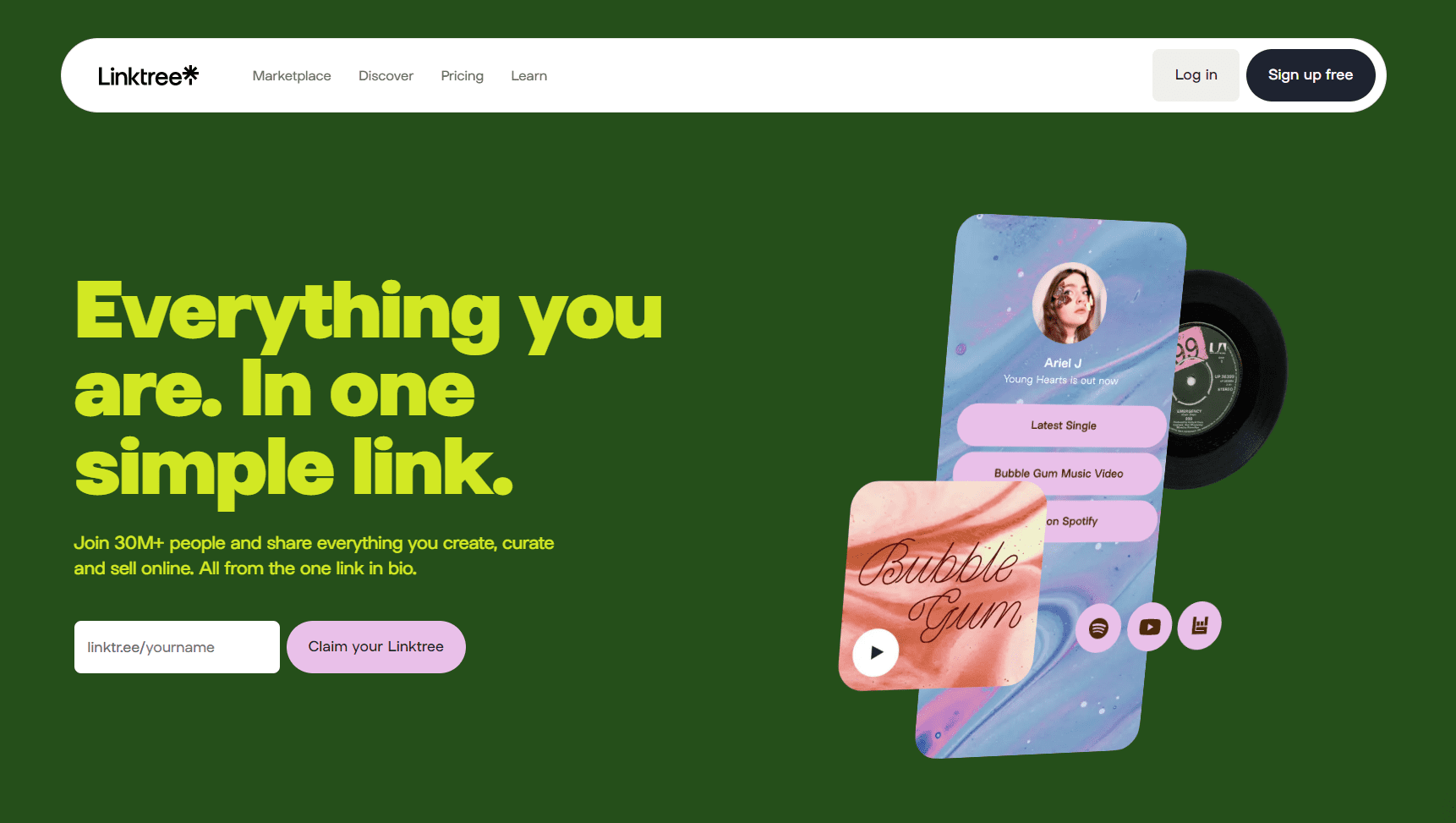
If you rely on social media channels like Instagram, Twitter, or TikTok to engage with your audience, Linktree might be the tool for you. It connects to your bio, providing a “tree” of links to various websites connected to you and your business. Many creators use Linktree to share multiple affiliate links, or direct followers to several pieces of new content.
In addition to popular social media platforms, Linktree can also integrate with over 30 apps, including PayPal, TiPJAR, and Shopify. Using Linktree, you can essentially put your videos up for sale as e-commerce products. All pricing levels allow you to access these storefront integrations, but only paid plans will allow you to set up affiliate links if you want to work with third-party brands.
Pricing
- There is a free plan which allows you to add unlimited links to your bio page.
- Paid plans go from $5 to $24 per month.
Pros
- Easy to use for both the seller and the buyer.
- Offers plenty of customization options.
- Integrates with major payment processing softwares and storefronts.
Cons
- Need to rely on integrations in order to earn money with the tool.
5. Cleeng
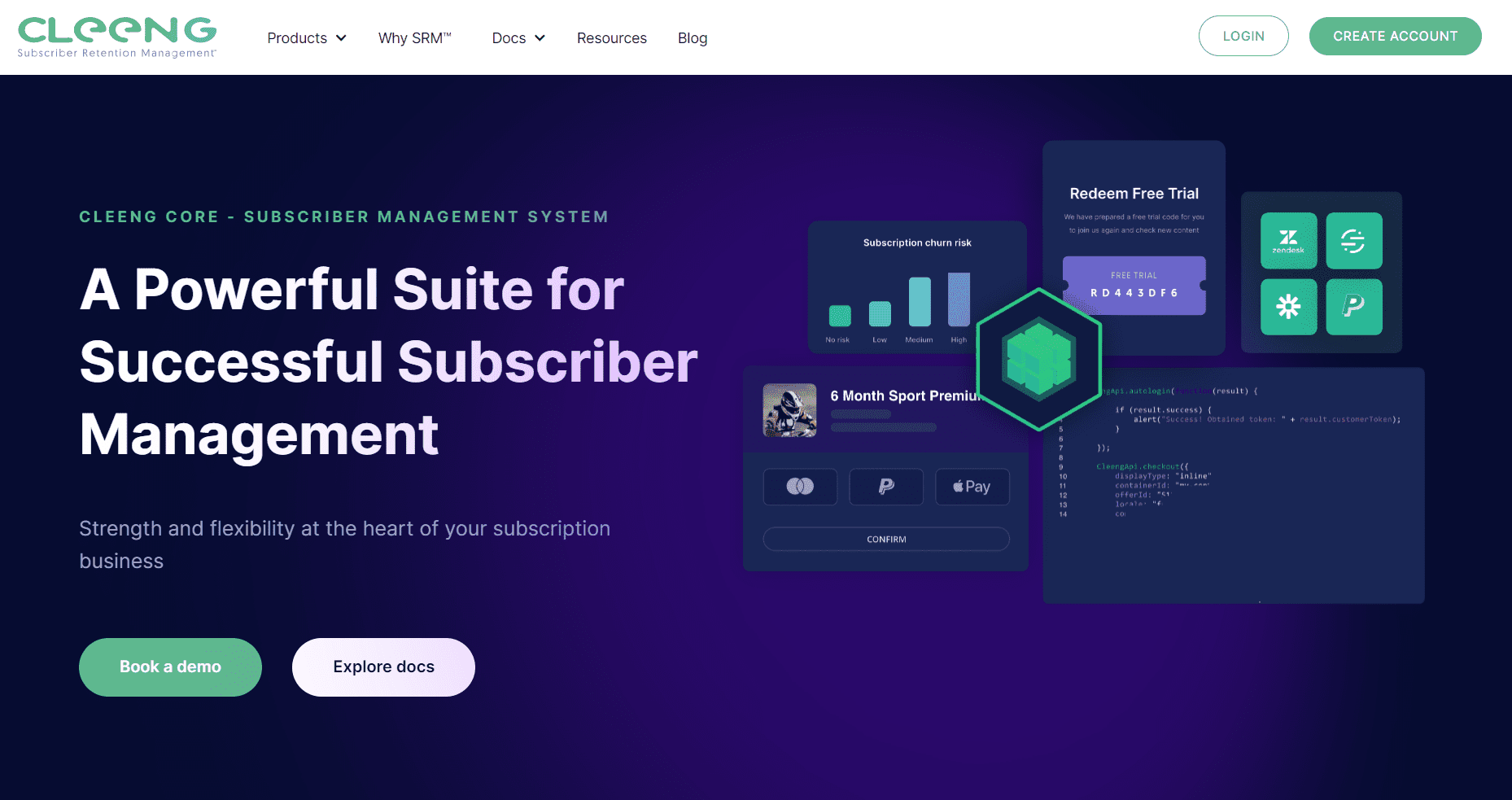
The team behind Cleeng call themselves specialists in “subscriber management.” Essentially, this means they can help you build and maintain a strong audience around your content. This platform is fantastic if you have a set of courses or a video series that you want viewers to watch in sequence. Or, if you specialize in one niche, Cleeng can help you build a following by notifying subscribers of every new video release.
Though they mostly promote a SVOD model, Cleeng allows you to test out any monetization model you want. This platform also uses AI to help you get a leg up on promoting to new audiences, optimizing the checkout experience, and minimizing churn. And, if you’re a techie, they have a developer toolkit that lets you custom-code your own subscriber management app within Cleeng.
Pricing
- Pay per managed user, i.e., a subscriber who purchases or accesses your content.
- Paid plans range from $0.69 to $1.49 per user, depending on the tools you include in your plan.
Pros
- Very detailed analytics dashboards.
- Cool AI tools to support you.
- High customizability.
- Scalable billing options.
Cons
- More difficult to learn how to use than other platforms.
- No integrations to other tools.
6. Thinkific
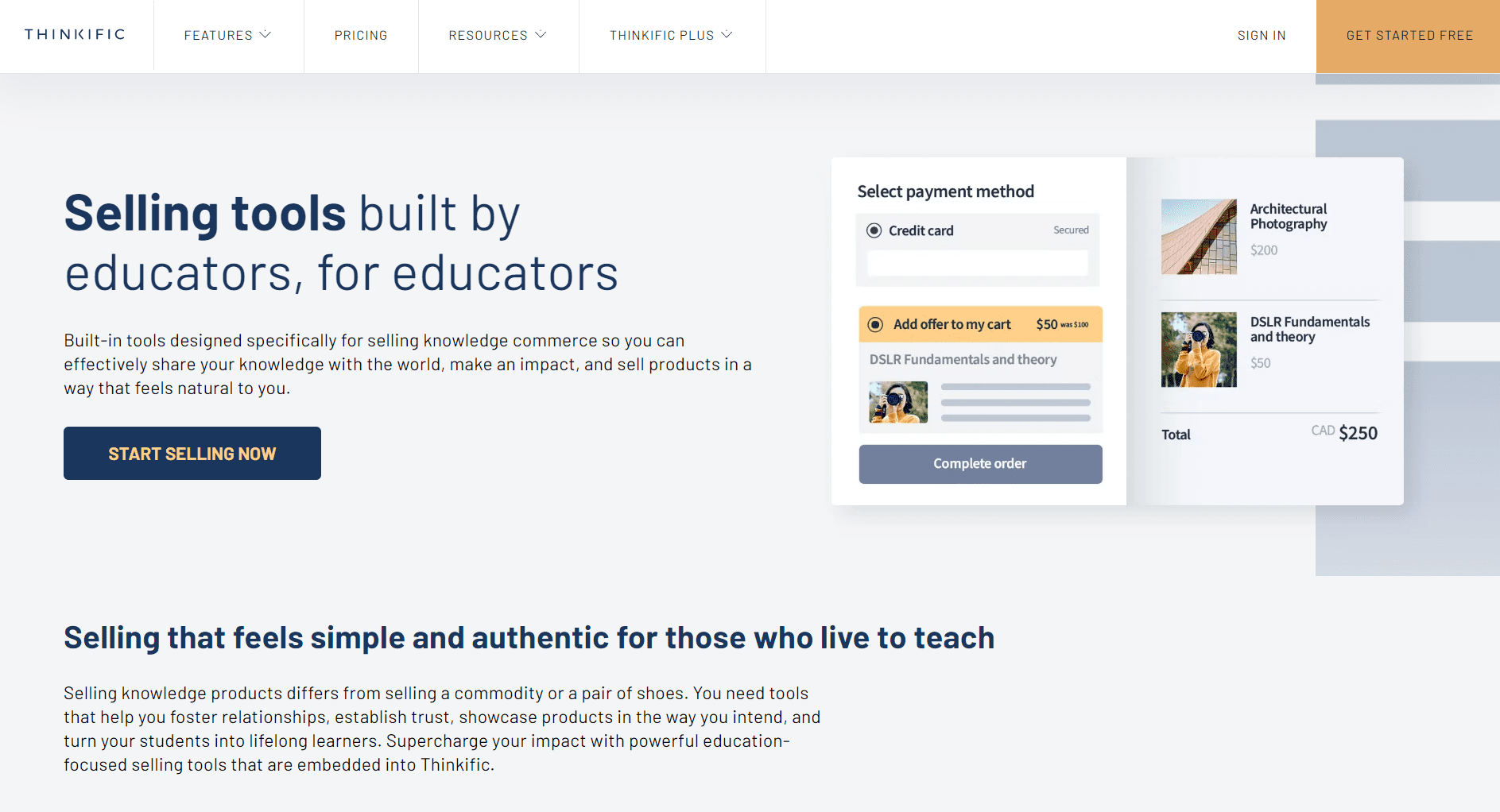
Perfect for creator educators, Thinkific is one of the best video monetization platforms for selling video courses online. With this platform, you can choose between using a SVOD or TVOD monetization model to start earning with your videos.
If you want to opt for a full-fledged course experience, you can also add quizzes, documents, and more directly into your course. Thinkific guides students through the online course automatically, so you can build the lesson sequence exactly how you’d like.
Another benefit is that Thinkific supports community management. So, if you have a following or are looking to build an audience, this tool can help you with that. Payments from your video revenue are paid out instantly in multiple ways through one of Thinkific’s many integrations partners.
Pricing
- Free plan is available.
- Paid plans range from $49 to $199 per month.
- Opportunity to save 25% by paying annually.
Pros
- Instant access to funds and no transaction fees.
- Wide range of ways to engage your audience in addition to video.
- Great customer support.
Cons
- Does not support ad-based video monetization strategy.
- Since the platform is very feature-rich, it can take some time for beginners to figure out how to best select and use different features.
7. Muvi
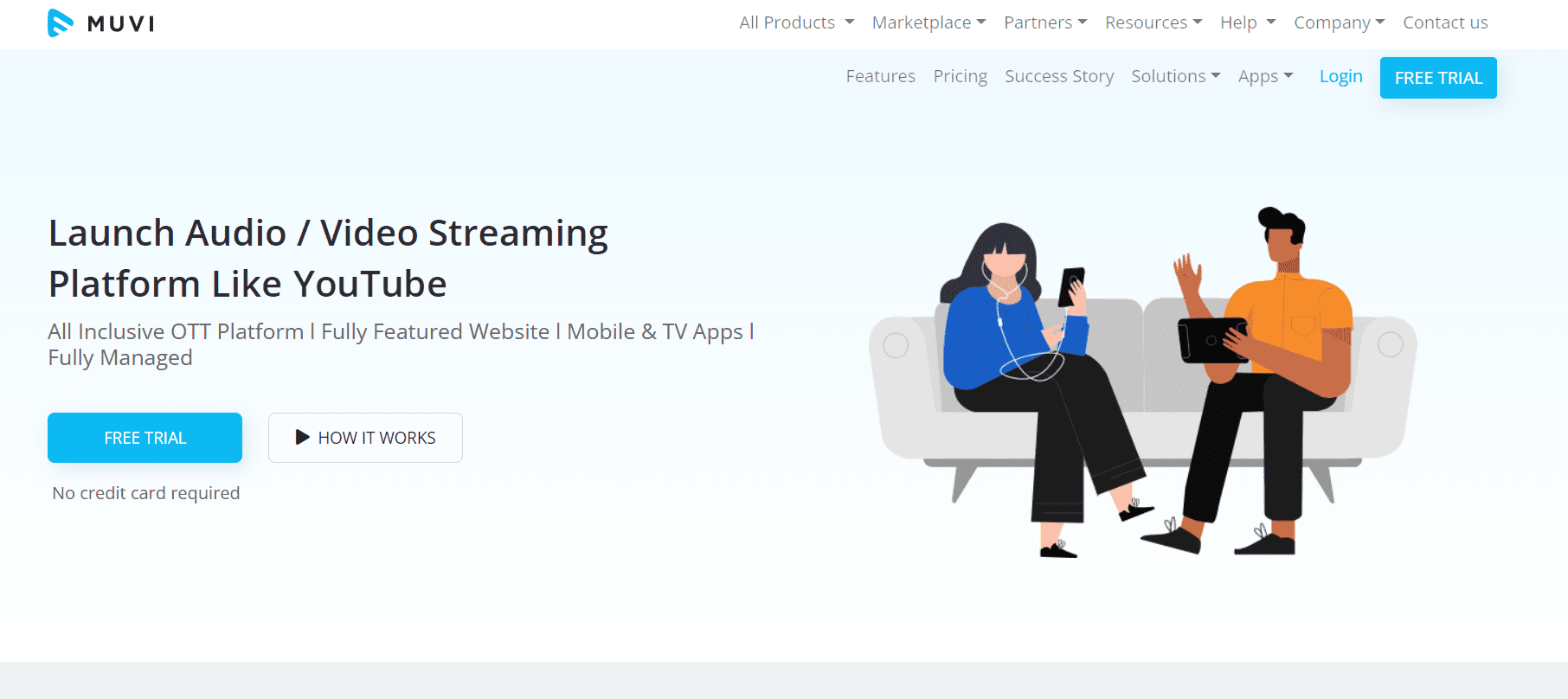
Muvi prides itself on being a fully managed and all-inclusive OTT monetization platform. It not only allows you to sell your videos, but it also helps you build the apps to sell your content.
This video monetization platform caters to all industries and supports a wide variety of video content, including video on demand (VOD), live streaming, e-learning courses, and online gaming videos. Additionally, Muvi comes with all the integrated features you need to monetize videos and more, including your own personalized domain, native web and mobile apps for popular systems, and developer tools to help you customize your marketplace.
Beyond the platform, Muvi also offers support services for end-user support and CMS management. If you’re a small business or an individual who’s short on time, this type of support can go a long way to help you launch your video business as a side revenue stream without eating away at your free time.
Pricing
- Free trial available (no credit card required).
- Plans start at $399 per month + $299 per app and additional infrastructure fees.
- Up to Enterprise level at $3,900+ per month.
- Save 10% by paying bi-yearly or 15% by paying annually.
Pros
- Incredibly feature-rich.
- Add-on service offerings can save you time and effort.
- Tons of customization options and device compatibility.
- Very scalable.
Cons
- Expensive and may not be affordable for small businesses.
- Less integrations than other platforms.
8. Lightcast
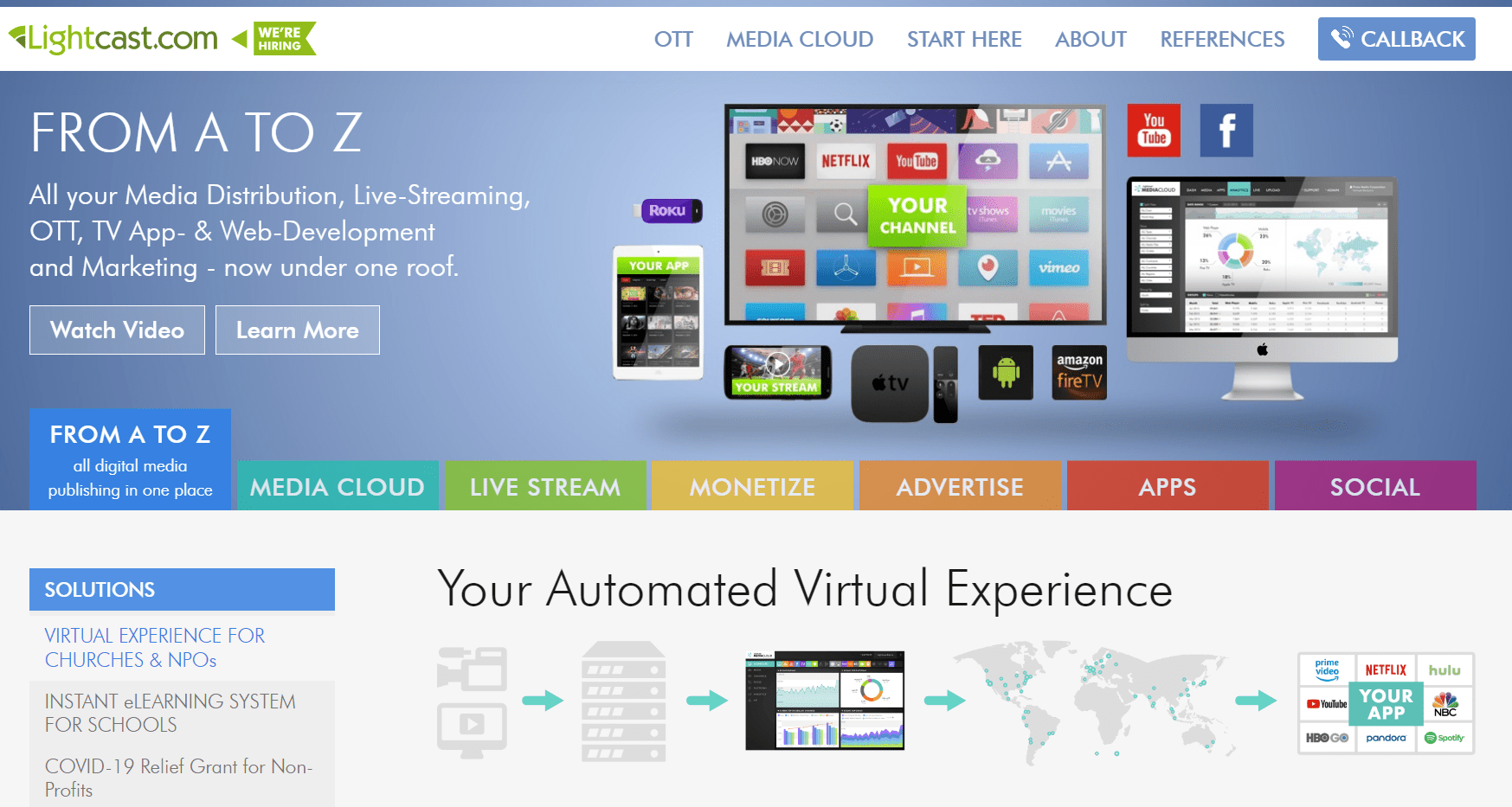
Lightcast promotes itself as a way to “automate the virtual experience.” It has the capability to automate digital media content streams such as social media, live streaming, and advertising directly. This video platform also help users monetize with AVOD, TVOD, and SVOD strategies.
Lightcast’s video monetization services come in bundles packages with a number of the platform’s other services, meaning you’ll be paying for more than just video monetization services here. However, despite the extra cost, this isn’t necessarily a bad thing. If you’re in need of extra support or just have a ton of content to move around, Lightcast can help you with its additional services and automation. Additionally, all plans include some distribution support (including Roku TV) and an unlimited amount of viewers per month.
Pricing
- No free plans.
- Paid plans range between $2,388 to $21,588 per year.
- Discounted fees if you pay annually.
Pros
- Agency support if you need it.
- Includes distribution of your video content.
- Supports all video monetization strategies.
Cons
- It’s on the pricier side.
- Website and tooling has poor UX.
9. InPlayer
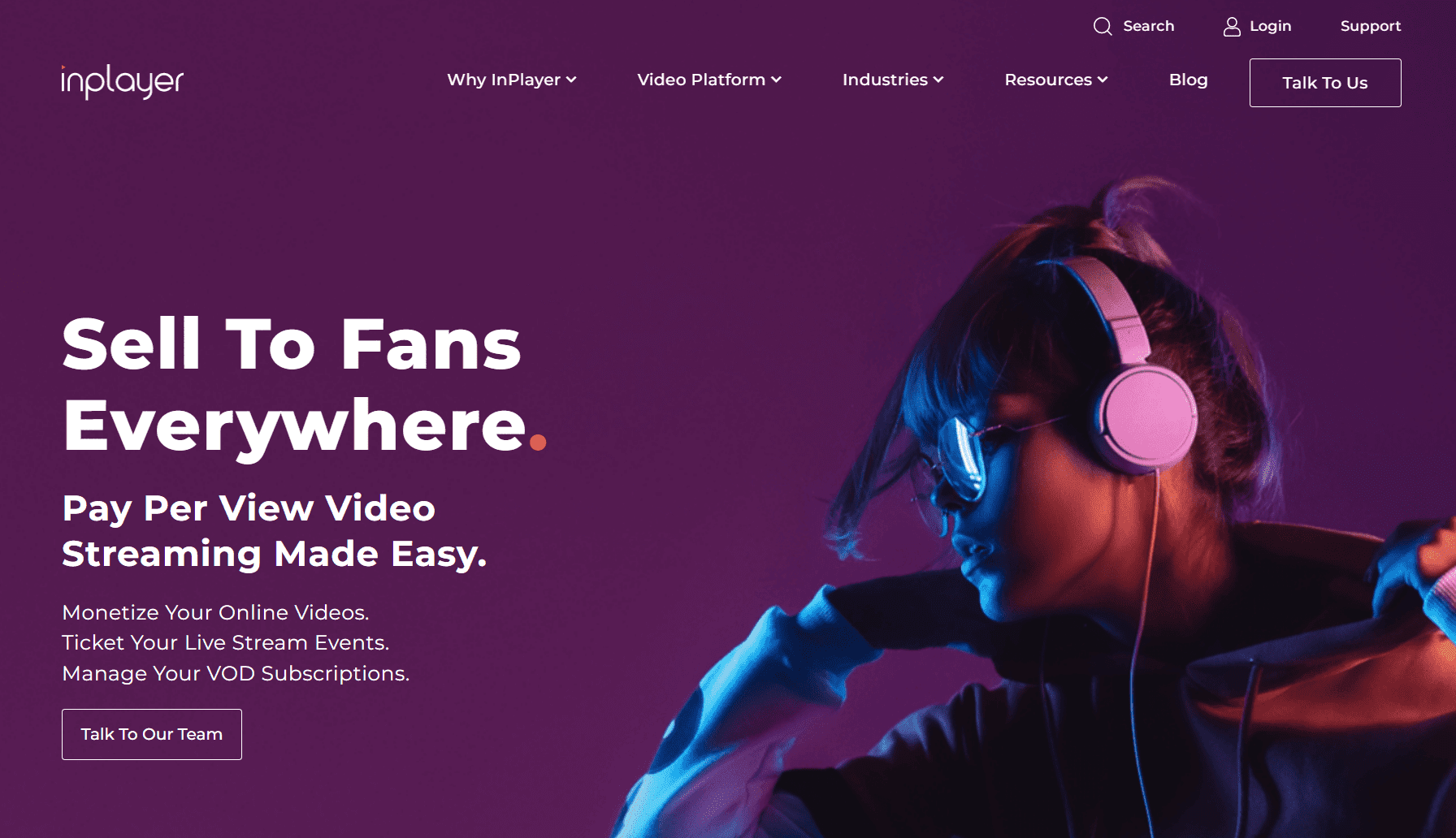
Made for music-oriented creators, InPlayer covers all aspects of selling music digitally, including audio streaming, monetization of online music videos, ticket sales processing for virtual livestream events, and management of VOD subscriptions. In other words, InPlayer covers a lot of video monetization models, which is great for creators looking to increase their revenue streams.
In terms of features, InPlayer provides a plug-and-play paywall, meaning you can choose to sell your videos through authenticated pay-per-view or subscription sales. To help you generate leads on your sales, InPlayer also lets you share a livestream highlight to users without a subscription, which might inspire new audiences to subscribe.
In addition, InPlayer focuses a lot on authentication and user security. Some examples of the platform’s key security features include social sign-in services, in-app authentication for payment processing, and the ability for the seller to add custom registration fields upon user sign-up.
Pricing
- Not publicly available.
Pros
- Easy for development teams to set up integrations with.
- Supports lots of different kinds of access for content.
- Global approach with multi-lingual support and foreign currency conversion.
Cons
- User interface is a bit difficult to navigate.
10. Dacast
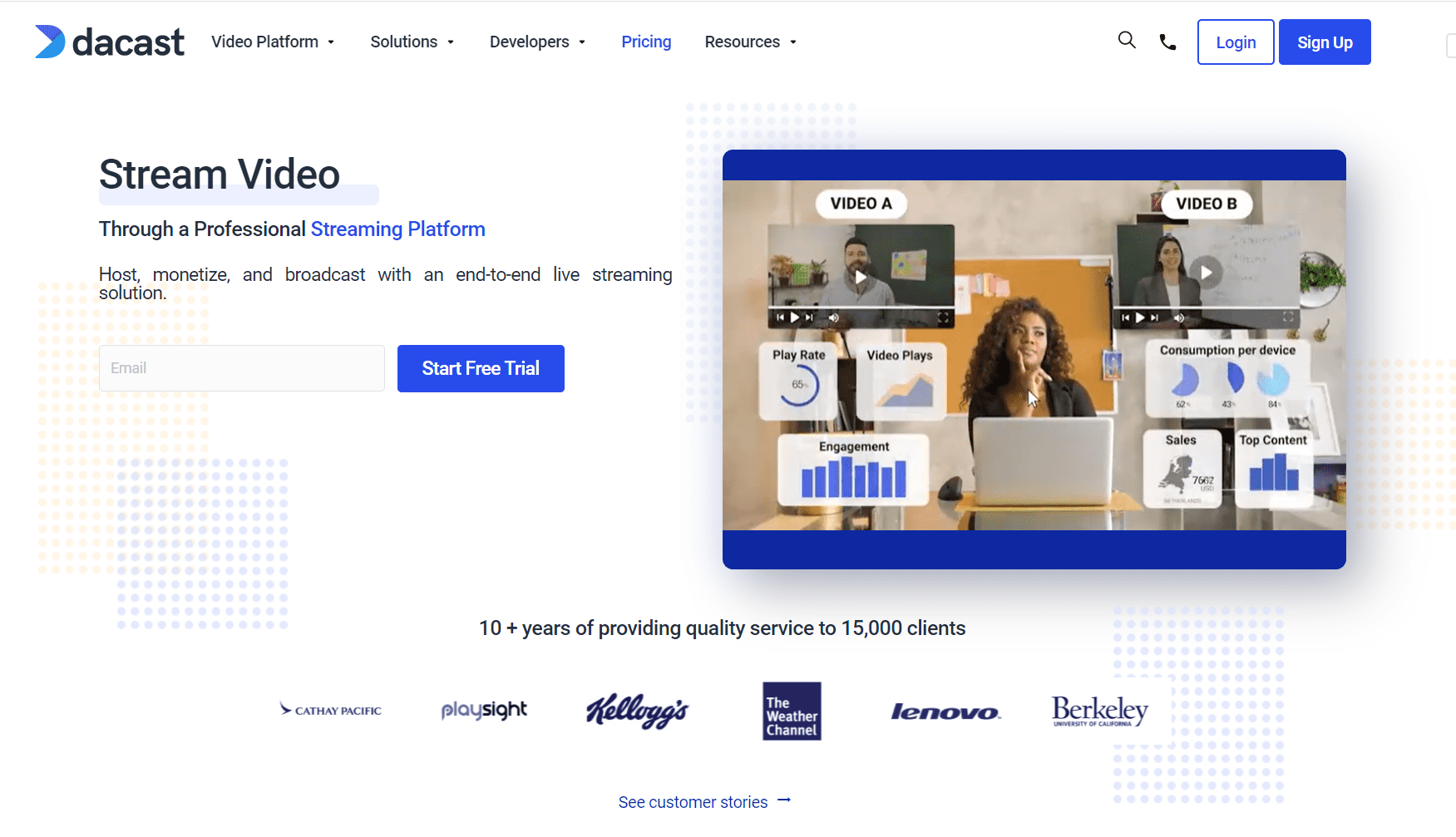
Dacast specializes in live streaming video content, though it also offers capabilities for VOD. This is great for sharing your recorded video content after a livestream ends.
There are four key areas that this platform focuses on, including streaming, connecting, managing, and measuring. In terms of streaming and connecting, Dacast helps you create different types of videos, which can then be distributed throughout the platform’s video delivery networks.
On the management side, Dacast has a video CMS to help you organize content. This platform also offers analytics on your video content and sales, and on the marketing efforts that go into your distribution.
All in all, Dacast is a great video monetization platform if customizability is one of your priorities. This platform provides you with tons of developer resources, allowing you to code a custom experience, including video transcoding, pay-per-view content, and secure video upload features.
Pricing
- No free plan available, though you can get a free trial.
- Paid plans range between $39 – $188+ per month.
- Custom plans available.
- Only the Scale level (highest paid plan) provides discount for annual pricing.
Pros
- Features to support global audiences.
- Specialize in live streaming.
- Prioritize security and privacy.
Cons
- Need developer or coding support for additional monetization strategies.
- Weak integrations compared to other platforms.
11. Kaltura
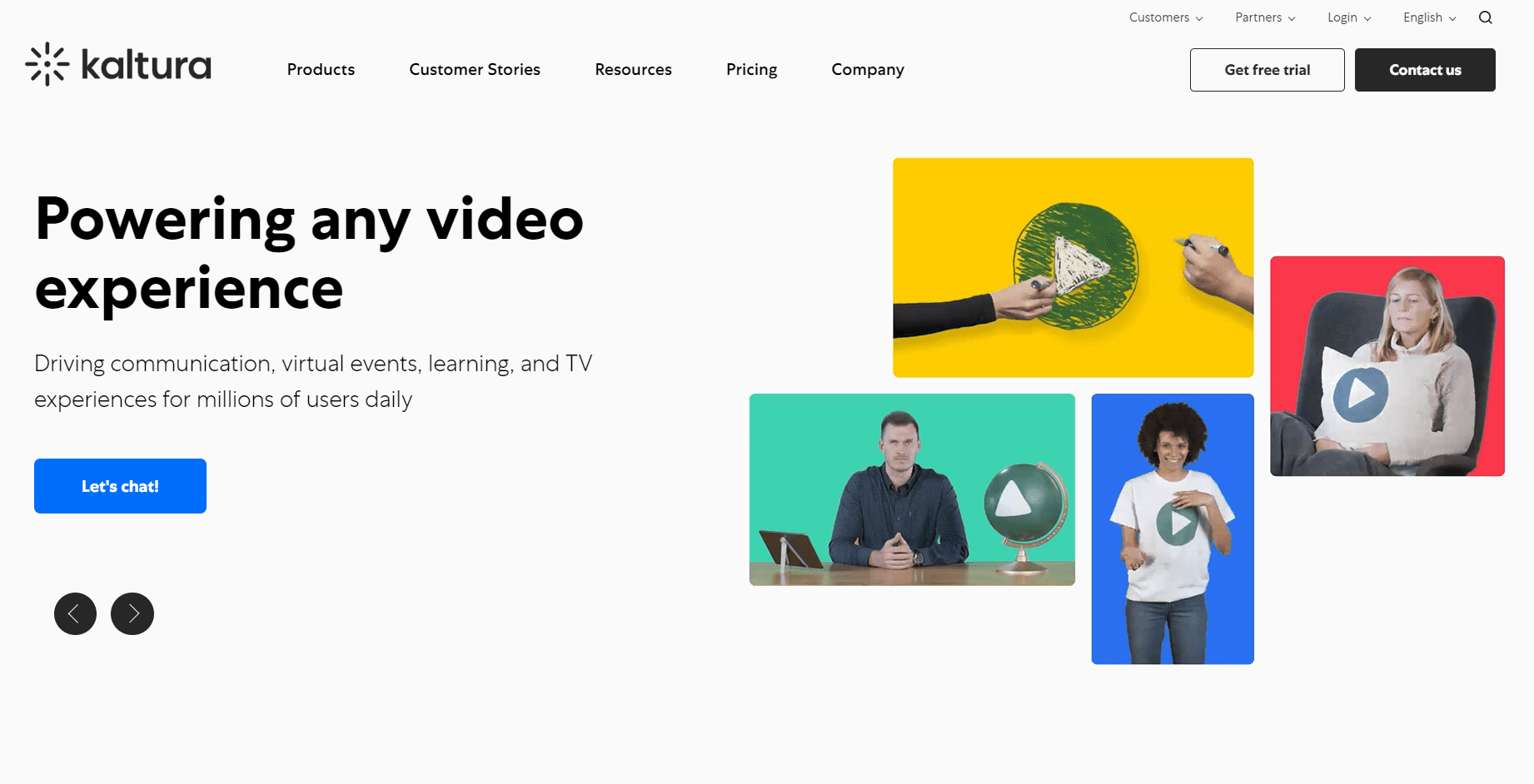
Aimed at helping enterprises manage video content, Kaltura has many features that support webinars, virtual events, and training. It also has a video portal for users to easily access content.
Kaltura presents each “solution” (webinars, training, virtual events, video messaging) as a separate offering with individual pricing. You can sign up for a free trial using any of these solutions individually, but you need to contact its sales team to mix and match multiple solutions into one package. This could be a pro if you’re looking for flexibility, or a con if you are looking for a full-service video monetization platform.
Pricing
- Free 7-day trials available for each tool.
- Virtual classrooms start at $19 per month (1 classroom).
- Webinar tools start at $99 per month.
- Custom enterprise plans available.
Pros
- Lots of video resources to help you get started.
- Flexibility in services.
- Can support high volume of content for enterprise teams.
Cons
- Not a full-service video monetization platform.
12. TikTok

Unless you’ve been living under a rock, you’re likely at least somewhat familiar with TikTok. Designed as a social media platform for sharing bite-sized videos, TikTok has recently exploded as a video monetization solution for both individual creators and brands alike. If you are good at keeping up with trends and are skilled at storytelling using short-form videos, you have a good shot at making TikTok work for you.
As a bonus, TikTok is free to set up and you can start publishing content any time. Additionally, TikTok allows you to connect directly with your followers, so you can get up-to-the-minute feedback on whether your audience really likes the content you’re creating.
However, like YouTube, you’ll need to reach a certain level of growth before you can start monetizing your content. On TikTok, you can monetize videos through advertising (AVOD), doing brand partnerships, or getting paid per view by the TikTok Creator Fund.
Pricing
- Free.
Pros
- Can film and edit videos directly in the platform.
- Tons of highly engaged daily active users.
- Very affordable to set up and test content ideas.
Cons
- Trends move quickly.
- Can be hard to stand out in a sea of new content every day.
- You can’t monetize instantly.
- Difficult to estimate how much you can make each month on this platform.
13. Vimeo OTT

For years, Vimeo has existed as an online video platform with a great reputation and wide use around the world. Now, with Vimeo OTT, you can use the platform to monetize video content.
In addition to helping you monetize videos, the platform also allows you to create marketing content, offer video subscriptions, build branded apps, and host live events. If you’re in need of building a website, Vimeo OTT can even help you with that too.
Vimeo OTT is well set up for reaching global audiences, as its payment processor accepts over 100 currencies. The platform supports TVOD and SVOD, as well as a live streaming monetization model. If you already have a following, you can also offer incentives such as free trials and free-to-view content to your audience via Vimeo OTT to help generate more sales.
Pricing
- Pay $1 per subscriber per month + 10% processing fees on each transaction.
- Custom enterprise plans available.
Pros
- Lots of training resources to help you get started.
- All plans include thousands of templates.
- No upfront monthly fees.
Cons
- Very high transaction costs and not as scalable. The cost grows as you grow.
- AVOD and FVOD video monetization models only available for enterprise plans.
- Needs a bit of technical support to set up.
14. Brightcove
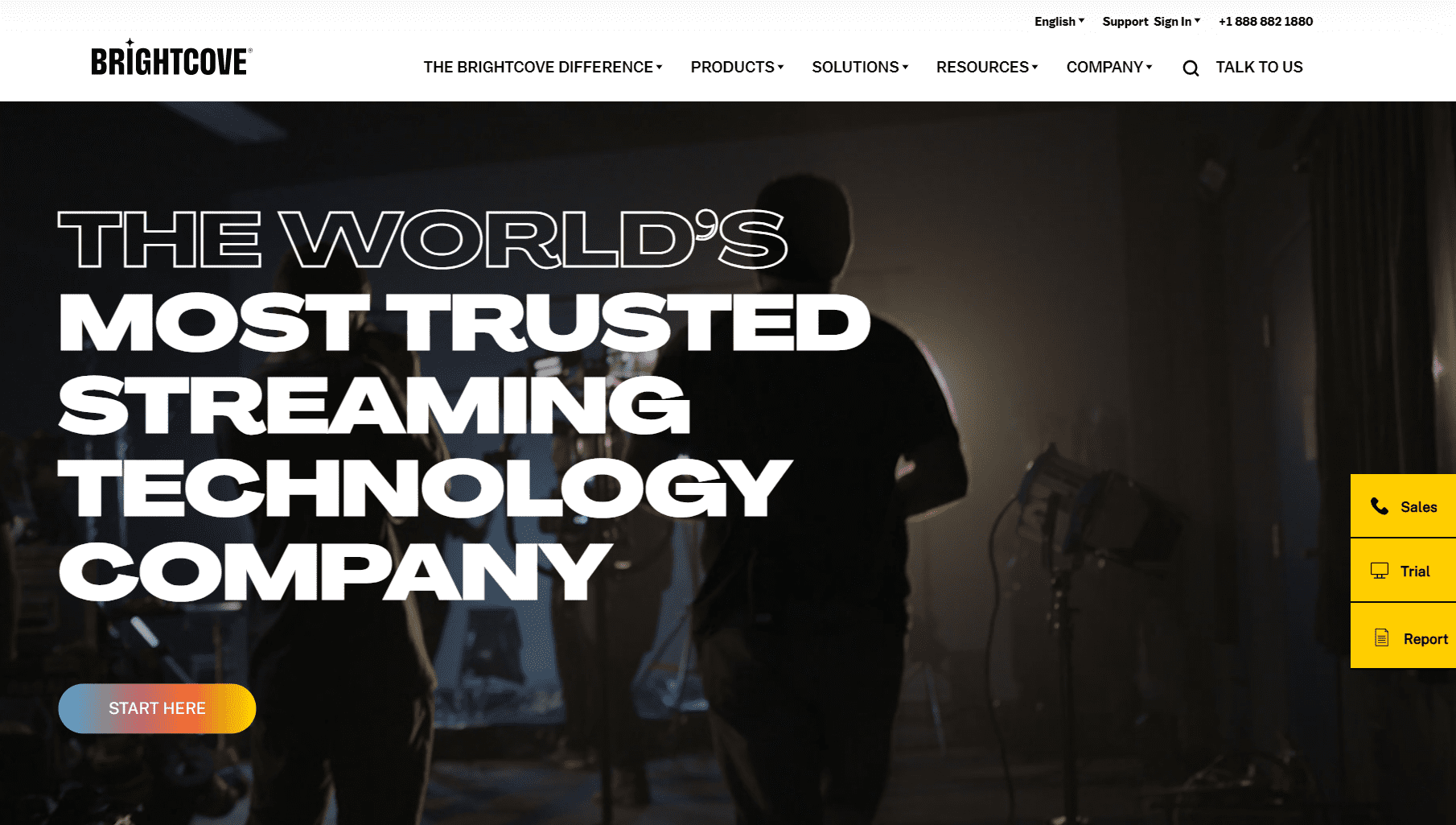
Brightcove offers video monetization for creators who don’t want to go through the hassle of production and licensing. The platform provides you with marketing tools and deep analytics that allow you to see whether your video content is reaching the right users. It also analyzes your programming and monetization data to help you make data-driven decisions about your content offerings.
Moreover, Brightcove is built to cater to a lot of different industries, so its features can help support a wide range of creators.
Additionally, the platform combines content management for various syndication channels such as TV, website, mobile ,and social media apps all in one platform. This all-in-one format helps you expand your content’s reach while reducing your time spent working.
Revenue-wise, the tool helps you earn money through multiple monetization models, including AVOD, SVOD, and TVOD. On top of video monetization, you can also use this platform to sell other products or engage with your audience directly.
Pricing
- Pricing is not publicly available.
- Separate plans for “Marketing” vs. “Enterprise” use of the platform (starter, professional, and enterprise levels).
Pros:
- Easy-to-navigate platform.
- Advanced analytics dashboard.
- Integrates into WordPress to play videos on your website.
Cons:
- Can be very slow to upload larger video files.
- Does not help you create a branded storefront or website.
15. VlogBox
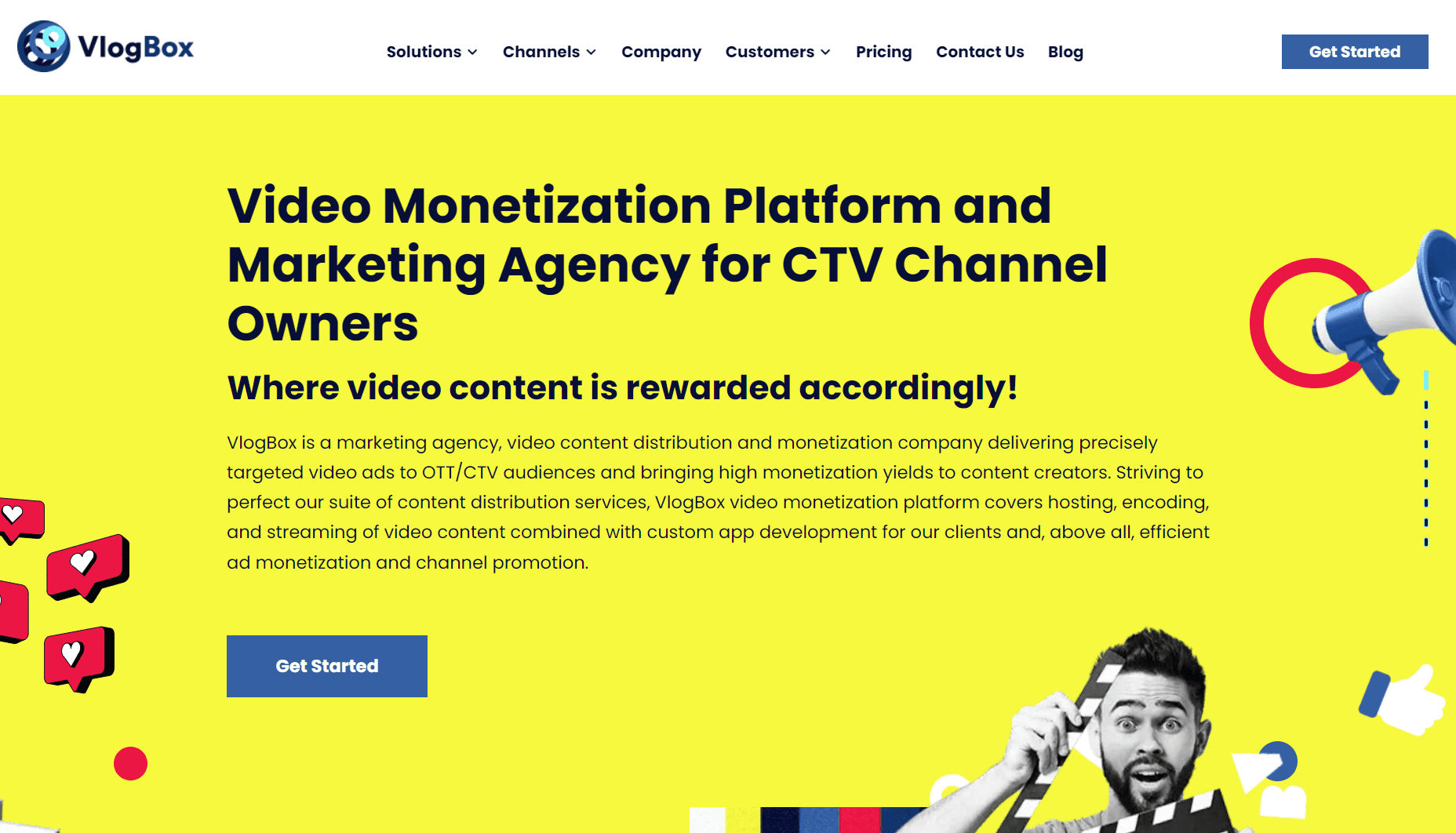
VlogBox specializes in video monetization for connected TV (CTV) producers. Essentially, if you are looking to put your videos onto a Smart TV, this is the platform for you. This premium video monetization platform provider can help you develop an app, launch it for CTV, and market it in order to begin earning revenue on your content. VlogBox supports AVOD and SVOD monetization strategies. Pricing is based on a revenue share that you earn each month.
Included in your package is a personal manager who can help you set up and maintain your app. In terms of analytics, VlogBox provides deep insights into your top performing content and eCPM (a measure of how valuable your ad revenue is).
Pricing
- No free plans.
- Paid plans range from $399 – $1,099+ per month.
- Custom plans are available if you have a large audience.
- $1,000 upfront fee for app development is required.
Pros
- Specialists in getting your content onto Smart TVs.
- Work closely with a personal support person from integration to reporting.
- Detailed analytics dashboard.
Cons
- Mandatory additional fee for app development.
- More expensive than most other platforms.
What is the best video monetization platform?
The 15 platforms listed above are some of the overall best video monetization platforms on the market right now. However, the best video monetization platform is the one that is best tailored to your specific needs and goals as a creator. There’s no one-size-fits-all video monetization solution.
Before committing to one of the many video monetization platforms out there, consider what kind of content you want to create, which video monetization methods best service your business, as well as your budget. From there, we hope this guide will help you get started and help your video business take off.
Looking for more ideas to rake it in online? Download our free guide on how to make money on TikTok.
Follow The Leap on TikTok and Instagram for more monetization tips for creators. We also make a newsletter.

